Planning Commission Sets Work Goals
Ann Arbor city planning commissioners met earlier this month in a work session focused on two main issues: (1) evaluating the city’s planning manager, Wendy Rampson, and planning staff, and (2) laying out the work plan for both staff and the commission in the coming fiscal year.
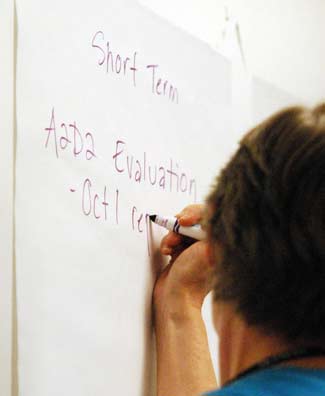
At a June 4, 2013 work session, Wendy Rampson – the city of Ann Arbor’s planning manager – wrote down topics that the planning staff and commission will address in the short term, including an evaluation of A2D2 zoning. (Photos by the writer.)
The evaluation was positive, with most of the discussion focused on increasing collaboration with the city council and other city boards and commissions. The possibility of holding a joint session with members of the city council was raised, though some commissioners expressed skepticism about it. Ken Clein noted the challenge would be to avoid posturing by councilmembers, saying it might be difficult to have a productive discussion in a public forum. Wendy Woods observed that sometimes the planning commission is used for political cover. If a joint session is “just for show,” she said, then planning commissioners have better ways to spend their time.
Sabra Briere, a Ward 1 councilmember who serves on the planning commission, cited some benefits for a joint session: “If you want to work with council, sitting in the same room and at least getting a sense of where this year’s crop of councilpeople are can’t hurt – and it can help the council.”
Regarding the work plan, commissioners identified projects and issues to tackle in the coming fiscal year, which begins July 1, as well as longer-range goals.
The most pressing of those short-term projects is the review of A2D2 zoning as directed by the city council, with a deadline of Oct. 1 to deliver recommendations to council. The primary focus of that is the downtown D1-D2 zoning, especially in light of the controversial 413 E. Huron development, which the council recently approved. Rampson said the plan is to bring in a consultant to manage that zoning review, because the planning staff right now doesn’t have the capacity to take it on. It also helps to have someone look at the issue from a fresh perspective, she said.
Other projects for the coming fiscal year include: (1) developing an action plan for the city’s sustainability framework; (2) completing the Zoning Ordinance Reorganization (ZORO) effort; (3) recommending amendments to the R4C/R2A zoning districts; (4) working on certification for the state’s “Redevelopment Ready Communities” program; and (5) making amendments to the city’s master plan for two corridors plans – Washtenaw Avenue and North Main/Huron River.
Several longer-term efforts are on the commission’s work plan too, including amendments to the city’s accessory dwelling unit ordinance and neighborhood outreach.
Commissioners voted to approve the work plan at their regular meeting on June 18.
Planning Staff Evaluation: Collaboration
The planning commission gives an annual formal evaluation of the city’s planning manager and staff. Commissioners had completed a survey, and spent part of the June 4 working session reviewing the results of that survey. [.pdf of evaluation survey results] The session was also attended by Sharie Sell of the city’s human resources department.
Ken Clein noted that the evaluation was “overwhelmingly positive.” Much of the commission’s conversation focused on the issue of collaboration, and an interest in increasing the planning staff and planning commission’s collaboration with other city boards and commissions, as well as with the city council.
Collaboration was mention explicitly in some of the commissioners’ survey responses, which were made anonymously:
City Council can be tough, especially when they aren’t in the trenches…hang in there and let CPC know when we can be more proactively helpful. Would an annual joint working session be helpful (maybe including a couple other commissions that may have valuable input on current issues)?
I’d like to see us include other commissions (or at least a representative or two) when dealing with Energy, Environment, Parks, Housing, etc.
Planning manager Wendy Rampson wondered if some kind of collaborative element was important enough to add to the commission’s regular schedule, or whether it should be handled at the committee level.
Sabra Briere, a city councilmember who serves on the planning commission as the council’s representative, reported that the city administrator, Steve Powers, recently asked her if she thought a joint session between the council and planning commission would be useful.
Wendy Woods, a former city councilmember, wondered whether the point of a joint session would be to work on a specific issue, or whether other commissioners felt there was a general need for better communication and collaboration. She noted that the environmental commission includes representatives from other commissions, including planning. Perhaps that’s a model that should be adopted by more commissions, Woods said.
Diane Giannola worried that joint meetings of the planning commission and city council would bring politics into the commission’s work. She wasn’t interested in regular sessions with the council. Briere clarified that the idea was for a once-a-year working session, not regular meetings.
Ken Clein noted that the challenge would be to make sure that councilmembers aren’t just posturing. There are certainly issues in the community that warrant discussion, he said, citing possible changes to the R4C and D1 zoning, as well as other land use issues along the city’s main corridors. The challenge is to get people together in a productive atmosphere. It’s even more difficult to do in a public meeting, Clein said.
Briere recalled a joint meeting with the council and planning commission – held at the Community Television Network studios – that she described as very valuable. [That session, held in September 2009, also included members of the Ann Arbor Downtown Development Authority and focused on developing downtown design guidelines.]
Briere said she understood the concerns about politics and posturing. But she also hears people on council and on the planning commission say they’re waiting for direction from the other entity. The council is looking to the planning commission to help create a vision, she said.
Woods noted that sometimes the “help” is really the council looking for political cover. She observed that sometimes a member of the council will talk about taking an issue to the DDA to see what the DDA will do – even though that same person sits on the DDA board. [She didn't mention him by name, but mayor John Hieftje is the only person current serving on the council who also serves on the DDA board.] Woods pointed out that the planning commission is only advisory, so it concerns her when the council – as an elected body – isn’t the entity that’s creating a vision for the city.
Briere replied that each councilmember has a vision for the city, but that doesn’t mean the council as a whole has a collective vision. In that case, Woods said, perhaps the council needs a facilitator.
In that regard, Briere highlighted a council retreat late last year that focused on developing budget priorities. [See Chronicle coverage: "Council Focus: Budget, Safety, Infrastructure."] It was the first time that the council as a group had worked together to develop some consensus statements, she said. “If you want to work with council, sitting in the same room and at least getting a sense of where this year’s crop of councilpeople are can’t hurt – and it can help the council,” Briere said.
Woods responded, saying that councilmembers can pretend like they’re taking advice from the planning commission, but then they’ll just count votes to make their decisions, and use the commission for political cover. She noted that some councilmembers have told her that they’re glad she’s made certain comments in public. Why don’t those councilmembers feel like they can make the same kind of statements? Woods said that if people want to have a joint meeting and really listen to each other, that’s fine. But if it’s “just for show,” she added, the planning commissioners have a lot of work to do and have better ways to spend their time.
Briere replied: “I’m being the messenger.” The council hasn’t discussed having joint meetings, or raised these issues, she noted. The city administrator had queried her about it, as have some people who sit on other city boards and commissions, who are interested in talking about D1 zoning. “They want to talk about some of the impacts they see,” Briere said.
Giannola feared that a joint session would involve councilmembers trying to persuade planning commissioners to take action in a certain way. Briere reiterated that the council as a whole hasn’t talked about holding a joint session.
Rampson brought the conversation back to the topic of the evaluation, asking whether the staff should look for more collaborative opportunities, or take their cues from commissioners in terms of next steps. “We can be as proactive or opportunistic as you want us to be,” she noted, but it sounded to her like direction might need to come from commissioners or the council.
Bonnie Bona cited the city’s master plan as the area in which the council and planning commission overlaps the most, from a voting perspective. By law, both the council and planning commission must approve the same version of any document in the master plan.
Relative to D1 and D2 zoning, Bona thought it would be great to get together with other commissions and the council. There’s a high level of interest, she said, and it’s better to be as inclusive as possible in those discussions. But perhaps those discussions can focus on the master plan level, as opposed to the zoning level, she added. If they were to hold just one joint session, Bona felt that should be the topic.
Bona also thought a well-facilitated discussion on R4C zoning would be useful, focused on “what are we trying to do?” rather than “how are we doing it?” She felt that R4C might get “hung up” in the details, and getting on the same page regarding the intent of the zoning would be helpful so that the process doesn’t “self implode.” It’ll be messy, Bona said.
Another possible joint-session topic would be the action items for the sustainability framework, Bona said. That issue covers more than just planning issues.
Bona also noted that the commission’s executive committee has in the past been responsible for council relations, and she suggested letting that committee decide when to bring in the council on any of these issues. Conversations in that committee can be more in-depth, she said, and they could strategize about the best use of everyone’s time. [As the commission's secretary, Bona currently serves on the executive committee. Other members are the chair (Kirk Westphal) and vice chair (Wendy Woods).]
Commissioners also talked about the need for a facilitator for any joint session, so that it would free participants – commissioners, council and staff – to engage fully in the discussion.
Their June 4 discussion was wide-ranging, and frequently circled back to other issues related to the city council. One issue raised was the length of recent meetings, which have lasted past midnight. Woods suggested that the council might consider doing things differently, possibly by starting meetings earlier in the day. Currently, council meetings begin at 7 p.m. She indicated that it’s hard for people to think straight at such late hours, and noted that some cities hold their council meetings during the day.
Briere pointed out that some councilmembers work during the day. She felt that daytime meetings actually limited participation by the public, because most people have jobs that would prevent them from attending a meeting before 5 p.m.
Briere also observed that until the past year, council meetings didn’t extend as late as they do now. The meeting length isn’t necessarily related to the number of public hearings or presentations, she said, although it can be. “It’s often a factor of who sits at the table,” she said. “There are times when individuals are more loquacious, ask more questions, and have more opportunity to speak – and that extends the discussion time for any given item.”
Briere recalled when the former Ann Arbor News used to publish a “council clock” to record the length of council meetings. [This was during the late 1990s, when meetings also ran long.] Westphal jokingly asked if the clock indicated how long each councilmember spoke. Briere said it hadn’t been that sophisticated, although now it would be easier to do that. She noted that if that were done today, people would note that some councilmembers never speak. That might be because some councilmembers don’t feel the need to extend the discussion, she said.
FY 2014 Work Plan
Commissioners also spent more than half of the June 4 session discussing the work plan for both the commission and planning staff. They identified projects and issues to tackle in the coming fiscal year, which begins July 1, as well as longer-range goals.
Planning manager Wendy Rampson highlighted several “must do” tasks for FY 2014. The most pressing of those is the review of A2D2 zoning as directed by the city council, with a deadline of Oct. 1 to deliver recommendations to the council. The primary focus of that is the downtown D1-D2 zoning. She said the plan is to hire a consultant to manage that effort, because the planning staff right now doesn’t have the capacity to take it on. It also helps to have someone look at the issue from a fresh perspective, she said.
The commission’s ordinance revisions committee will take the lead on that project. Members include Bonnie Bona, Diane Giannola, Kirk Westphal and Wendy Woods. Westphal noted that a review of A2D2 zoning had been part of the commission’s work plan, even before the council directive. That directive had been spurred by a controversial development at 413 E. Huron, at the corner of Huron and Division. The site is zoned D1, the highest density allowed, and developers are building a 14-story apartment building there. The council voted 6-5 to approve the project at its May 13, 2013 meeting.
Sabra Briere, who also serves on the council, noted that councilmember Marcia Higgins has reestablished the design review committee to review the city’s downtown design guidelines and process. Rampson reported that the planning staff is not staffing that effort, so it’s not part of the work plan. Westphal, who served on the original design review committee, was nominated again but declined to participate on the current iteration.
In addition to the A2D2 zoning review, other short-term efforts in the work plan related to master planning and ordinance revisions are:
- An action plan for the city’s sustainability framework. Completion target: September 2013.
- Implementation of sustainability action plan. Completion target: To be determined.
- Evaluation of the citizen participation ordinance. Completion target: October 2013.
- The non-motorized plan update. Completion target: October 2013.
- Amendments to the Zoning Ordinance Reorganization (ZORO). Completion target: December 2013.
- Capital improvements plan (CIP) – second year update. Completion target: December 2013.
- Amendments to R4C/R2A zoning. Completion target: March 2014.
- Floodplain ordinance/flood insurance impacts. Completion target: March 2014.
- “Redevelopment Ready Communities” certification. Completion target: March 2014.
- Amendments to the land use element of the city’s master plan for two corridors plans – Washtenaw Avenue and North Main/Huron River. Completion target: June 2014.
- ZORO Phase 2. Completion target: June 2014.
- Sign ordinance amendments. Completion target: June 2014.
Some of these projects will require more heavy lifting than others by the planning commission and staff. Regarding the ZORO project, which has been in the works for years, Rampson noted that when the staff has completed the draft revisions, it will likely take quite a bit of work to move forward – first by the commission’s ordinance revisions committee, then by the full planning commission.
Regarding the status of the R4C zoning changes, Rampson noted that earlier in the meeting, commissioners had discussed the possibility of holding a joint session with the council on this topic. After everyone agrees on the items that should be implemented, she said, then the staff and commission can work on an implementation plan. The commission’s recommendations on R4C/R2A zoning changes were provided to the council as an item of communication on May 20, 2013. “They probably barely even noticed it, because they were talking about other things,” Rampson noted. [The focus of that meeting was approval of the city's FY 2014 budget.]
Rampson also explained that the city has been accepted into the Michigan Economic Development Corp.’s “Redevelopment Ready Communities” program, which requires a formal presentation to the community’s elected body – the city council. That might happen at a working session, which could include the planning commission and other city groups. From the RRC website:
RRC is a certification program promoting effective redevelopment strategies through a set of best practices. The program measures and then certifies communities that integrate transparency, predictability and efficiency into their daily development practices. The RRC certification is a formal recognition that a community has a vision for the future and the fundamental practices in place to get there.
Rampson noted that the RRC was originally developed by the Michigan Suburbs Alliance, which sold the program to the MEDC. [The executive director of the Michigan Suburbs Alliance is Conan Smith, an Ann Arbor resident who also serves as a Washtenaw County commissioner – an elected position.] The MEDC has indicated that if a community becomes certified as an RRC, it makes that community more “readily accepted” into that state agency’s various grant programs, Rampson said.
Another issue raised during the session related to the city’s flood ordinance. Rampson joked that it’s a situation in which not working on the flood ordinance might have actually helped the city. She said that last year, FEMA and Congress made changes to the federal flood insurance program that are fairly dramatic. Because the program was so deeply in debt – even prior to Hurricane Sandy – the legislation raised the federal flood insurance rates to market levels. If you have a property in a flood zone with a high flood depth and a federally backed mortgage, she explained, “your insurance rates may go up to as much as $25,000 a year.” [The 2012 Biggert-Waters Flood Insurance Reform Act was passed with the intent to make the National Flood Insurance Program self-sufficient.]
With new FEMA flood maps in place, some property owners have raised concerns about the fact that their land is now located within a floodplain or floodway. Rampson noted that about 500 homes are in the Allen Creek floodway, and a large portion of those are located within an historic district. Until now, historic buildings have been exempt from a lot of the city’s flood-related requirements, she said. But if the federal changes remain in place and prices of these homes drop in value because of insurance requirements, property owners might want to take action to avoid paying insurance – like elevating homes above the flood depth. “That changes the whole look and feel of a street,” she said.
“I’m trying not to be too alarmist,” Rampson added, but it’s something to keep an eye on. It’s possible that there’s a backlash and Congress might revoke the changes, she said.
The commission also identified topics for long-term possible action:
- Economic development initiatives.
- Student neighborhood property conditions.
- Visioning for southeast area neighborhoods – in the Ellsworth and Stone School area.
- “Mixed use” overlay amendment.
- Neighborhood outreach/engagement.
- Accessory Dwelling Unit ordinance amendments.
- “Age-friendly” master plan and ordinance amendments.
- Non-motorized Plan implementation
- Lowertown land use amendments.
Late in the session, Eric Mahler expressed frustration that so many items were being added to the work plan. [It was Mahler's last working session as a planning commissioner. His term ends on June 30, and he has been appointed to the board of the Ann Arbor Transportation Authority.]
He noted that the only thing the planning staff had been criticized for in its evaluation had been that they don’t move projects forward as quickly as some commissioners would like. Now, commissioners are adding to the list. Rampson replied: “We’re just getting it out of your system!” She said she wasn’t advocating to take on all these projects, but rather it was an exercise to ensure that commissioners laid out all their ideas. Woods added that the commissioners were brainstorming, particularly for the long-term items.
Mahler advocated for “moving the ball forward on what we’ve got,” rather than adding to the list. Rampson replied that it was important for commissioners to talk about their goals, but then it’s her job to bring them back to reality and talk about what’s possible for the staff to achieve, given their resources. The alternative, she noted, is for the commission to advocate to the city council for hiring a consultant for a particular project that the staff can’t handle.
On June 18, commissioners voted to approve the work plan with no additional revisions.
Present: Bonnie Bona, Sabra Briere, Ken Clein, Tony Derezinski, Diane Giannola, Eric Mahler, Kirk Westphal, Wendy Woods.
Absent: Eleanore Adenekan.
The Chronicle survives in part through regular voluntary subscriptions to support our coverage of publicly-funded entities like the city’s planning commission. If you’re already supporting The Chronicle, please encourage your friends, neighbors and coworkers to do the same. Click this link for details: Subscribe to The Chronicle.




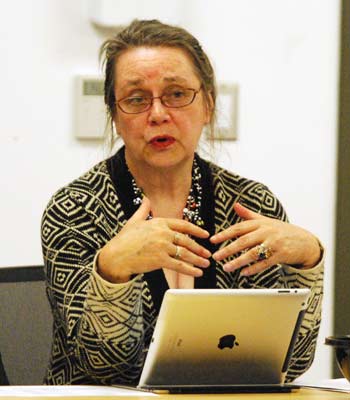
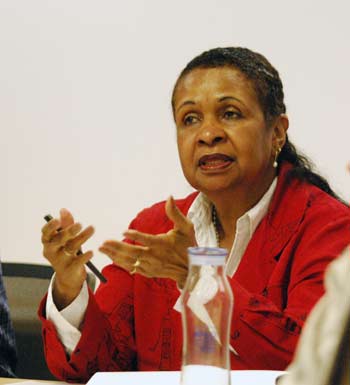
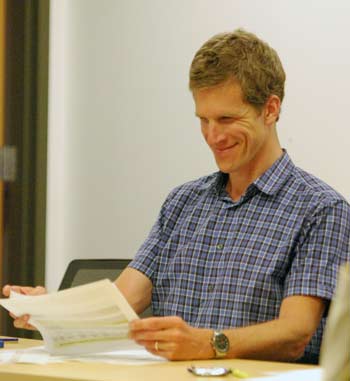
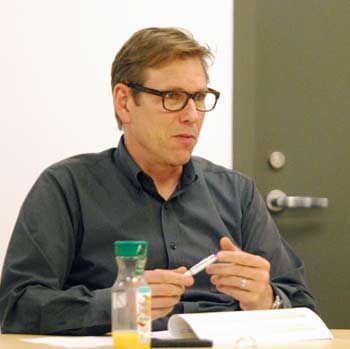
I am surprised by the reluctance of some Planning Commission members to meet with City Council for a joint working session.
When Council proposed modest changes for the relationship between the DDA and Council, some DDA Board members complained that Council had failed to collaborate with the DDA before seeking those changes. A joint working session of the Council and Planning Commission could be the kind of collaboration that the DDA sought.
I think some members of the Planning Commission recognize that staff has a tough time working with Council. Part of the problem is that the Planning Commission and the planning staff have a vision of our town that will accomplish some significant changes in personal behavior. For example, there seems to be some belief that land use planning can “nudge” resident out of their vehicles into alternative modes of transportation (whether residents want that or not).
If Council and the Planning Commission are pursuing different policy, there will continue to be considerable friction between the two. This can lead to circumstances where site plans and ordinance revisions recommended by the Planning Commission are rejected by Council
Joint working sessions might lead to an understanding by the Planning Commission about the ultimate policy considerations the Council will apply to planning decisions. I think the Planning Commission should welcome such collaboration.
My experience with joint sessions has been that they are usually ineffective in bringing about true communication. For one thing, there are usually too many people at the table.
Maybe better would be a retreat with a facilitator to work through issues. (Get one that doesn’t waste time at the beginning of the meeting asking everyone to introduce themselves.)